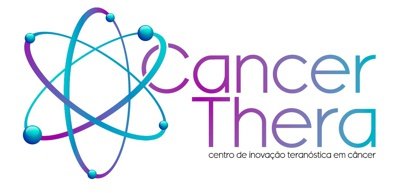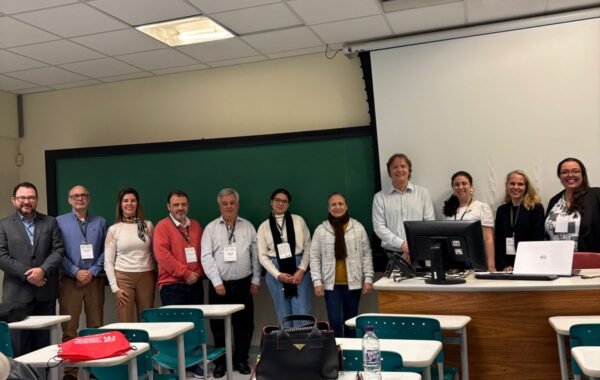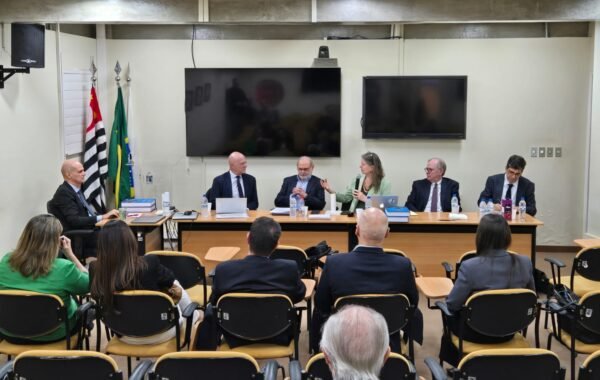On January 28, 2025, researchers from the CancerThera CEPID visited the National Center for Research in Energy and Materials (CNPEM), in Campinas (SP). The visit provided a comprehensive view of the center’s cutting-edge facilities and the potential for collaboration between the two institutions, especially in the areas of radiopharmaceutical production and the investigation of new molecules for cancer diagnosis and treatment.
The visit, hosted by Dr. Antônio José Roque da Silva, physicist, professor at the Institute of Physics of the University of São Paulo, and general director of CNPEM, not only reaffirmed the institution’s role as a hub of scientific excellence but also opened doors for new partnerships that could significantly impact research and the development of innovative therapies in Brazil. The CancerThera delegation consisted of ten professionals, including principal investigators, associates, collaborators, and postdoctoral researchers. CancerThera and CNPEM have already scheduled a follow-up meeting in February to deepen the dialogue on scientific collaboration opportunities.

Impressive structure and technology
Dr. Carmino A. de Souza, onco-hematologist, professor at the School of Medical Sciences of the University of Campinas (FCM/Unicamp), principal investigator, and director of CancerThera, highlighted the magnitude of CNPEM’s infrastructure and the diversity of research that can be developed there. “CNPEM is a source of pride for Brazil and, in particular, for Campinas. The research possibilities are virtually endless, covering fields such as Physics, Chemistry, Biology, Geology, and even the oil industry,” he noted.
The researchers were also particularly impressed by the potential of Sirius, the most advanced synchrotron light source in Latin America, for producing therapeutically relevant radiopharmaceuticals, a key area for CancerThera.
Synchrotron light is a high-brightness radiation that spans a broad region of the electromagnetic spectrum, from lower-energy radiation such as infrared to short-wavelength, high-energy radiation such as X-rays. “Therefore, this radiation can be used in different wavelengths (or energy levels), depending on the material being studied, to obtain specific information, such as its molecular structure,” explained Dr. Pedro Paulo Corbi, chemist, professor at the Institute of Chemistry (IQ) at Unicamp, principal investigator, and Innovation Manager at CancerThera.
“In this way, synchrotron light allows the study of different types of materials and the determination of their structures and properties, enabling applications in various fields of knowledge, including Biology and Medicine,” added Dr. Celso Dario Ramos, nuclear physician, professor at FCM/Unicamp, principal investigator, and deputy director at CancerThera. He also pointed out the possibilities in radiotherapy, including proton acceleration for proton therapy, a modality not yet available in Brazil.
“80% of everything there was designed nationally by Brazilian engineers in partnership with the scientific community in Brazil. It’s a facility that operates almost 24 hours a day, every day,” said Souza. He emphasized that the demand for Sirius is immense, with researchers from all over the world using its facilities for complex experiments, which even include accommodation areas on the campus when necessary.
Another highlight of the visit was the Advanced Health Technology Centers, with numerous pieces of equipment and experiments applicable to cancer research. Dr. Carmen Silvia Passos Lima, onco-hematologist, professor at FCM/Unicamp, principal investigator, and Innovation Coordinator at CancerThera, explained: “The availability of the research team to provide services for public and private companies (the facilities) and to establish partnerships in our field of research. And all of this here in Campinas, so close to us.”


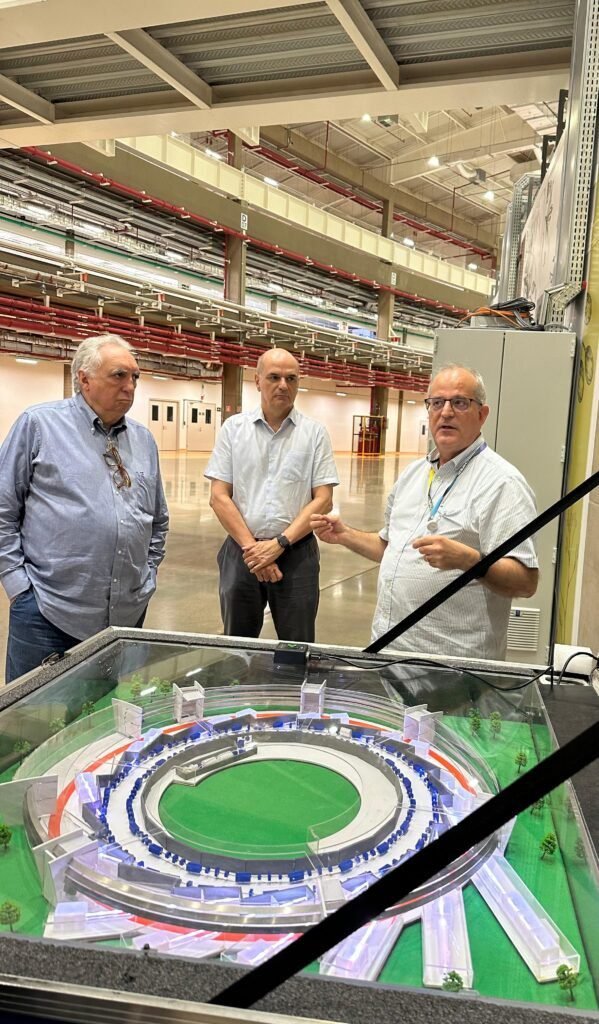

From inspiration to cooperation

“The laboratory facilities and the high capacity for managing infrastructure and research projects are two aspects that greatly impressed me,” noted Corbi. He highlighted that CNPEM’s pursuit of new technologies, including products and processes with applications ranging from Engineering to Health, serves as inspiration for universities and research centers.
Ramos praised the integration of CNPEM’s laboratories and the unique structure for molecular-level studies. “We identified various cooperation opportunities, both in the production of radioisotopes and in the research of new molecules, including those found in Brazilian flora. Perhaps one of these molecules will be of interest to CancerThera for cancer diagnosis and treatment,” he stated.
Lima added other potential areas of joint work between the institutions, such as: genomic, proteomic, and structural assessments of proteins to contribute to the research already underway at CancerThera; biodistribution studies of radiopharmaceuticals in small animals until CancerThera has its own preclinical study laboratories; and the identification of drugs with antitumor activity in in vitro studies (tumor cells and tissue engineering products) and in vivo studies (small animals).
“Right during the visit, we proposed a partnership to assess the permeation, that is, the penetration of metal complexes we’ve developed into the skin, aiming at skin cancer treatment, using skin models produced by them. We are already discussing this with the researchers in that area,” shared Lima about what could be one of the cooperation projects, especially involving the National Biosciences Laboratory (LNBio), part of CNPEM. Joint scientific events are also being planned.
Text: Romulo Santana Osthues | Photos: Carmen Silvia Passos Lima and Maria Carolina S. Mendes


